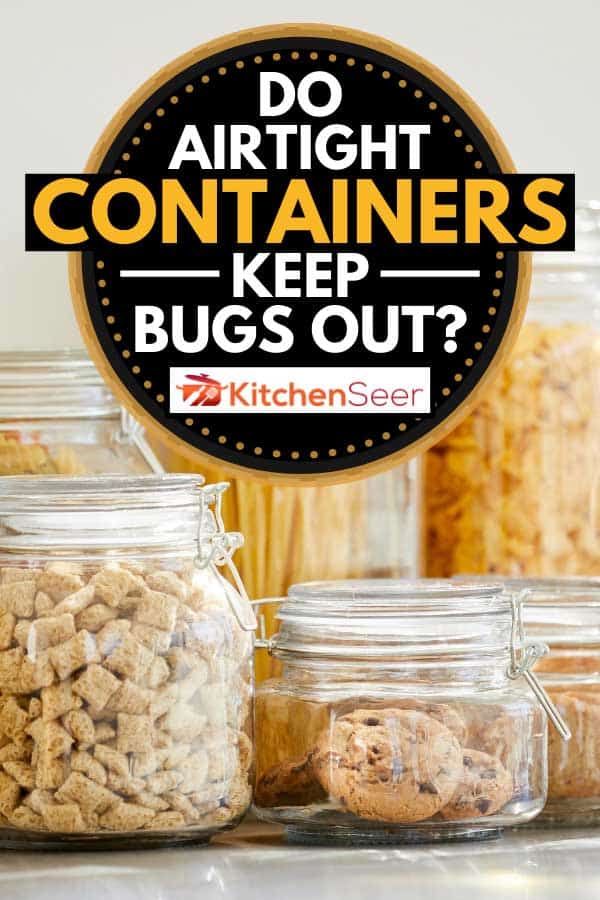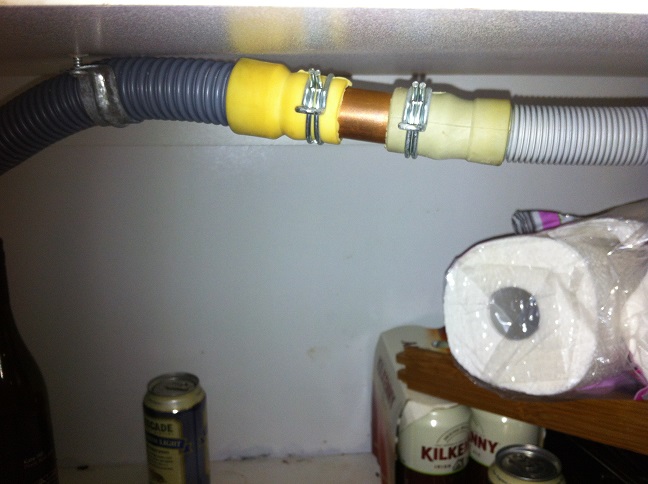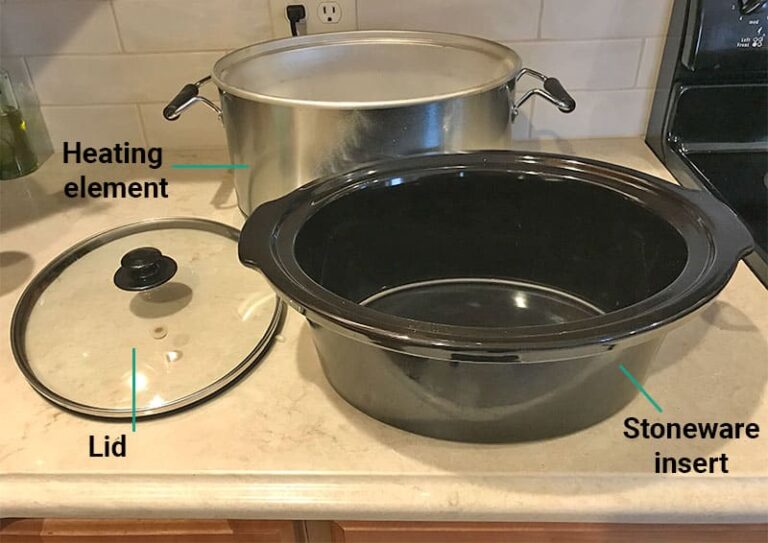How Do Bugs Get into Sealed Packages
Bugs can get into sealed packages in a few ways. If the package has any small openings, bugs can find their way in. Bugs can also hitch a ride on people or animals who come into contact with the package.
Once inside, bugs may lay eggs which hatch and multiply.
Bugs are everywhere – in our homes, in our gardens, and even in our food. But how do they get into sealed packages?
There are a few ways that bugs can find their way into sealed packages.
One is through tiny holes or cracks in the packaging. Another is if the package has been opened and then resealed, which can allow bugs to enter. And finally, sometimes bugs will lay their eggs inside food packaging, and when the eggs hatch, the larvae will eat their way out of the package.
So how can you keep your food safe from these pesky critters? Inspect your food before you buy it, and look for any signs of damage to the packaging. If you see anything suspicious, don’t buy it!
And when you’re storing food at home, make sure to keep it in airtight containers or bags to prevent bugs from getting in.
Best Storage Containers to Keep Bugs Out
When it comes to storage containers, there are a lot of options to choose from. But if you’re looking for a container that will keep bugs out, there are a few things you’ll want to look for.
First, make sure the container is airtight.
This will help to prevent any bugs from getting inside. You can test this by closing the lid and seeing if it’s completely sealed.
Second, look for a container that has a tight-fitting lid.
This will also help to keep bugs out and ensure that your food stays fresh.
Finally, consider using a container with a built-in pest control system. These systems use ultrasonic waves to repel pests, making them an ideal option for keeping bugs away from your food.
Can Weevils Get into Sealed Packages
Weevils are one of the most common household pests, and they can get into just about anything. This includes sealed packages. Weevils are able to penetrate even the tightest seals thanks to their long snouts.
Once they’re in, they’ll start laying eggs which will hatch into more weevils. Before you know it, your cupboard is infested with these pesky critters.
So how do you prevent weevils from getting into your food?
The best way is to keep them out of your home in the first place. But if you already have an infestation, you’ll need to throw away all affected food and thoroughly clean your pantry or cupboard. Weevils are attracted to grains, so be sure to check cereals, rice, flour, and other dry goods for signs of these pests before purchasing them.
Best Containers to Keep Bugs Out of Flour
When it comes to keeping bugs out of your flour, there are a few different options for containers that can help. Here are a few of the best containers to keep bugs out of your flour:
1. Airtight Containers
One of the best ways to keep bugs out of your flour is to store it in an airtight container. This will prevent any bugs from getting in, and will also keep the flour fresh for longer. There are a variety of airtight containers on the market, so find one that fits your needs and budget.
2. Bug-Proof Bags
Another option for keeping bugs out of your flour is to use bug-proof bags. These bags have special zippers that lock tight, preventing any bugs from getting inside.
They’re also usually made from thicker materials, which can further deter pests. Again, there are many different brands and styles available, so find one that suits you best.
Food Storage Containers to Keep Bugs Out
There are few things more frustrating than finding your food storage containers have been infiltrated by bugs. Luckily, there are a few simple steps you can take to prevent this from happening. First, make sure your containers are clean and dry before storing anything in them.
Any moisture or residue will attract bugs. Second, choose airtight containers made of materials like glass or metal. Bugs can chew through plastic, so it’s not the best option for long-term storage.
Finally, store your containers in a cool, dark place – insects are attracted to heat and light. By following these simple tips, you can keep your food storage containers bug-free!
Insect Proof Storage Containers
As the warmer weather approaches, so do the insects. No one wants to open their storage containers to find a family of critters has moved in and made a home out of their belongings. Here are a few tips on how to keep your storage insect free.
Use tight fitting lids: Make sure your storage containers have tight fitting lids. This will prevent any bugs from getting inside.
Clean before you store: Take the time to clean your items before you put them into storage.
Insects are attracted to dirty surfaces and are more likely to make themselves at home if they find a food source.
Inspect regularly: Even if you take all the precautions, it’s still a good idea to check your storage containers every so often for any unwelcome guests. If you do find insects, remove them immediately and take steps to prevent future infestations.
By following these simple tips, you can rest assured that your belongings will stay safe from insects while in storage.

Credit: kitchenseer.com
How Do Weevils Get into Sealed Packets?
Weevils are small, brown or black beetles that can infest food. They are attracted to cereals, grains, nuts, and dried fruit. The adult female weevil bores a small hole in a grain kernel and lays an egg inside.
When the egg hatches, the larva feeds on the grain until it is ready to pupate into an adult. Adult weevils can live for up to six months.
Weevils generally get into sealed packets through one of two ways: either the packet was not properly sealed when it was packaged, or the weevil found its way into the package after it was sealed.
If there is even a tiny opening in a packet of food, a weevil can squeeze through and lay its eggs inside. Once the eggs hatch, the larvae will start feeding on the food inside the packet. If a packet of food is left unsealed or open, it’s only a matter of time before weevils find their way in.
Can Bugs Live in Airtight Containers?
Yes, bugs can live in airtight containers. If a bug is sealed inside an airtight container, it will suffocate and die.
How Do Pantry Moths Get into Sealed Packages?
Pantry moths are small, brownish-grey insects that are attracted to dry goods such as cereals, grains, and dried fruits. They are able to squeeze through very small cracks and crevices in order to get into sealed packages. Once inside, they lay their eggs which hatch into larvae that feed on the food.
This can cause contamination of pantry items and should be avoided.
Can Weevils Get into Sealed Bags?
Weevils are a type of beetle that is known for infesting stored grains. If you have ever found a weevil in your flour or rice, you know that they can get into sealed bags. But how do they get inside?
The adult female weevil lays her eggs on the surface of a grain of wheat or rice. When the eggs hatch, the larvae burrow into the grain and begin to feed. The larva grows and moults several times before emerging as an adult weevil.
During this time, the weevil can cause extensive damage to the grain.
Once the adult weevil has emerged, it will mate and lay more eggs on other grains. This cycle can continue indefinitely, which is why it is important to store grains in airtight containers.
Weevils can squeeze through very small openings, so even a tiny hole in a bag can allow them access to your food supply.
If you think you may have weevils in your pantry, don’t panic! There are a few things you can do to get rid of them.
First, remove all of the affected food from your pantry and dispose of it properly. Then, thoroughly clean all surfaces with hot soapy water.
5 Classic Entry Points Bugs Use To get In Your Home
Conclusion
Bugs are attracted to food sources, so they are often found in packages of food. They can get into sealed packages in a few ways. Sometimes bugs lay their eggs in food before it is packaged, and the larvae hatch and eat their way out of the package.
Bugs can also crawl through tiny holes or tears in packaging. Once they’re inside, they can reproduce and create a whole infestation. To prevent bugs from getting into your food, inspect packages carefully before you buy them and store them in a cool, dry place.






